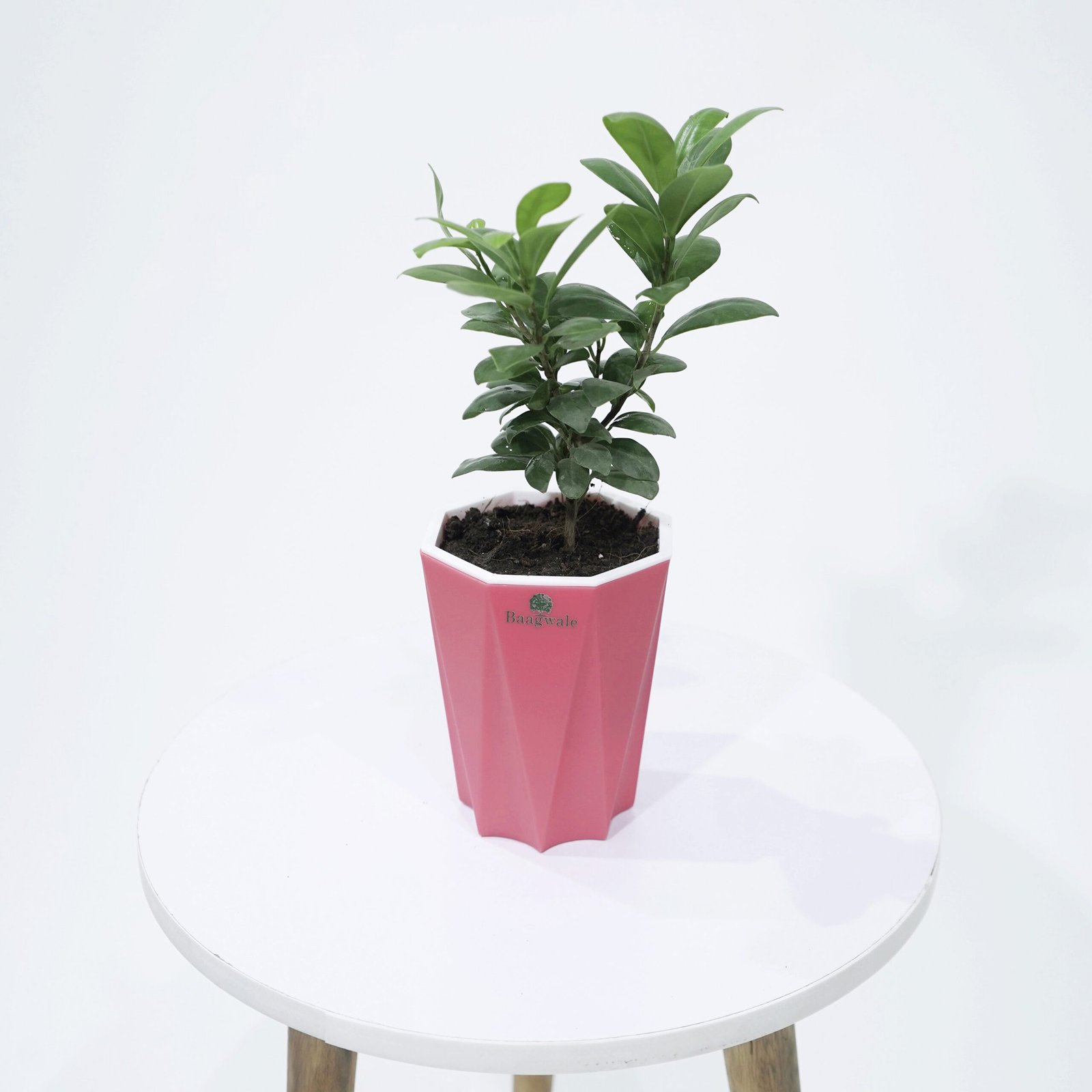What’s in the Box
- Mini Ficus Plant with Pot: 20- 25 cm
- Pot Size: 4-5 inch diameter
- Soil Media: Coco Peat+Coco Chips+Soil
- Recyclable box
Plant Care.
Light:
- Miniature ficus plants, like other ficus species, generally prefer bright, indirect light. They can tolerate some direct sunlight, but avoid intense, direct sun exposure, which can scorch the leaves. These plants may also adapt to lower light conditions.
Watering:
- Water your miniature ficus plant when the top inch (2.5 cm) of the soil feels dry to the touch. Ensure that the pot has drainage holes, and avoid overwatering to prevent root rot. It’s better to underwater than overwater ficus plants.
Temperature:
- Maintain a room temperature between 65-75°F (18-24°C). Ficus plants are sensitive to drafts, so protect them from cold drafts and temperature extremes.
Soil:
- Use a well-draining, lightweight potting mix. A mix formulated for houseplants or one that contains peat moss and perlite works well.
Pot and Drainage:
- Ensure the pot has drainage holes to prevent water accumulation at the bottom. Proper drainage is important to avoid overwatering.
Fertilization:
- Feed your miniature ficus plant with a balanced, water-soluble houseplant fertilizer every 4-6 weeks during the growing season (spring through early autumn). Follow the recommended dilution on the fertilizer label.
Pruning:
- Prune your miniature ficus plant as needed to maintain its shape and remove any leggy or yellowing growth. This can encourage bushier growth.
Propagation:
- Ficus plants can be propagated through stem cuttings. Take a healthy cutting and root it in water or soil.
Pests and Diseases:
- Keep an eye out for common houseplant pests such as mealybugs, spider mites, and aphids. Treat infestations promptly.
These care guidelines can help you keep your miniature ficus plant healthy and thriving. Miniature ficus plants can be attractive additions to your indoor space, adding a touch of greenery and elegance to your home or office. Be sure to adjust your care routine based on the specific conditions in your environment and the needs of your plant.
Components of a Self-Watering Pot:
- Reservoir: This is the bottom part of the pot, where water is stored. It typically has a separate compartment with a water level indicator, which helps you monitor the water level easily. The reservoir is usually separated from the plant container by a barrier that prevents the roots from sitting in standing water.
- Plant Container: This is the upper part of the pot where you plant your greenery. It has a growing medium (usually potting soil) and a plant.





Reviews
There are no reviews yet.